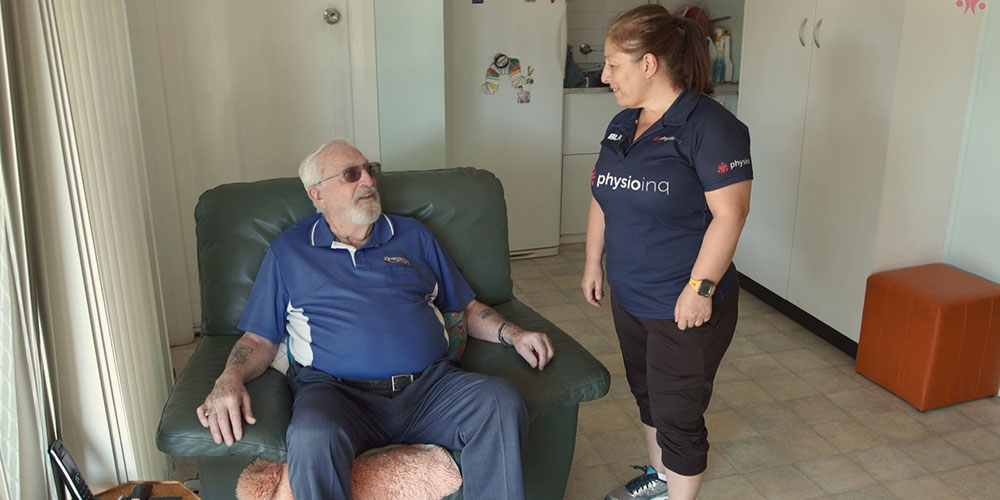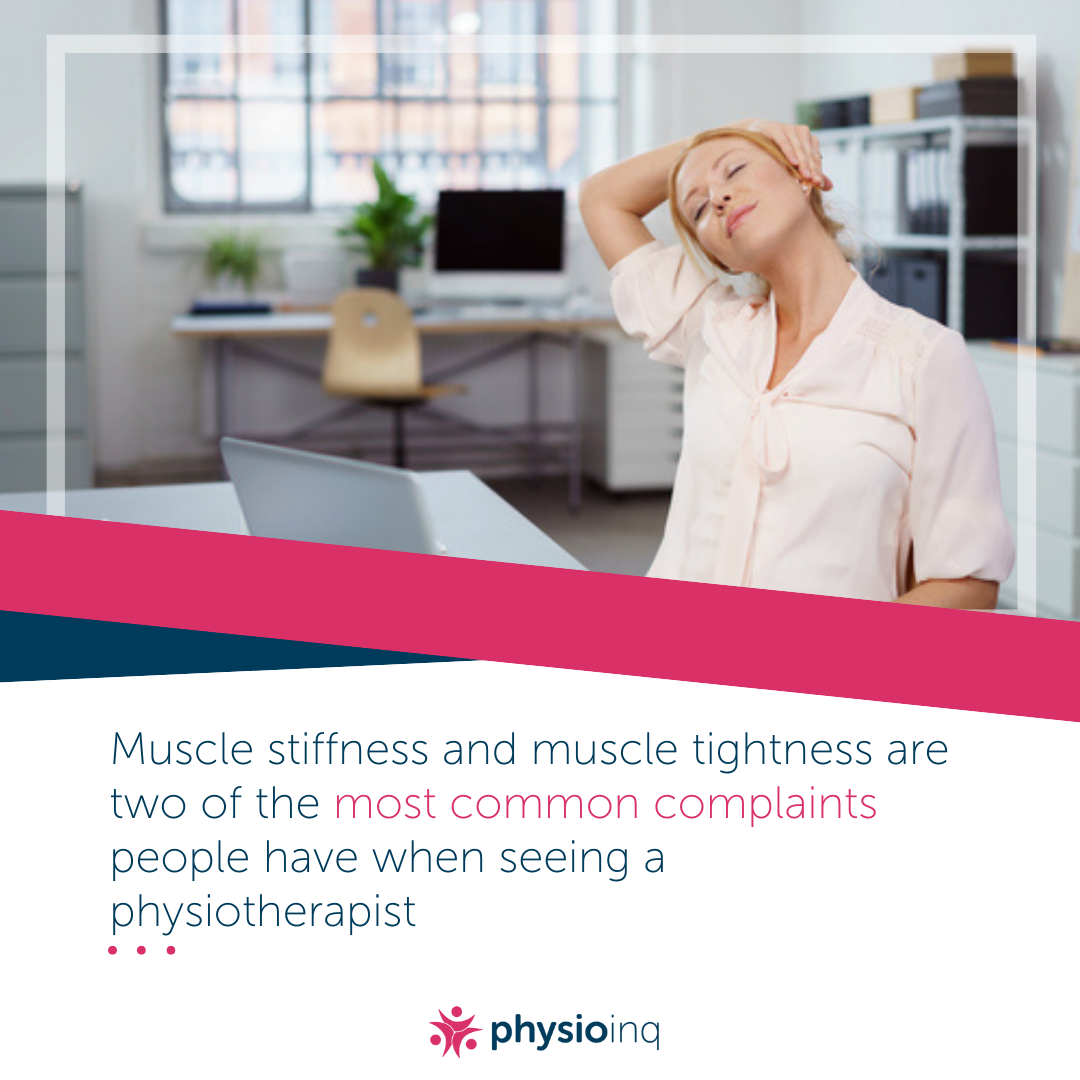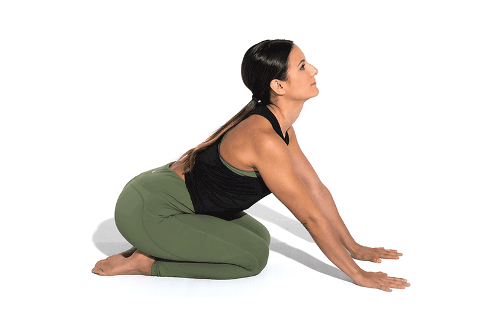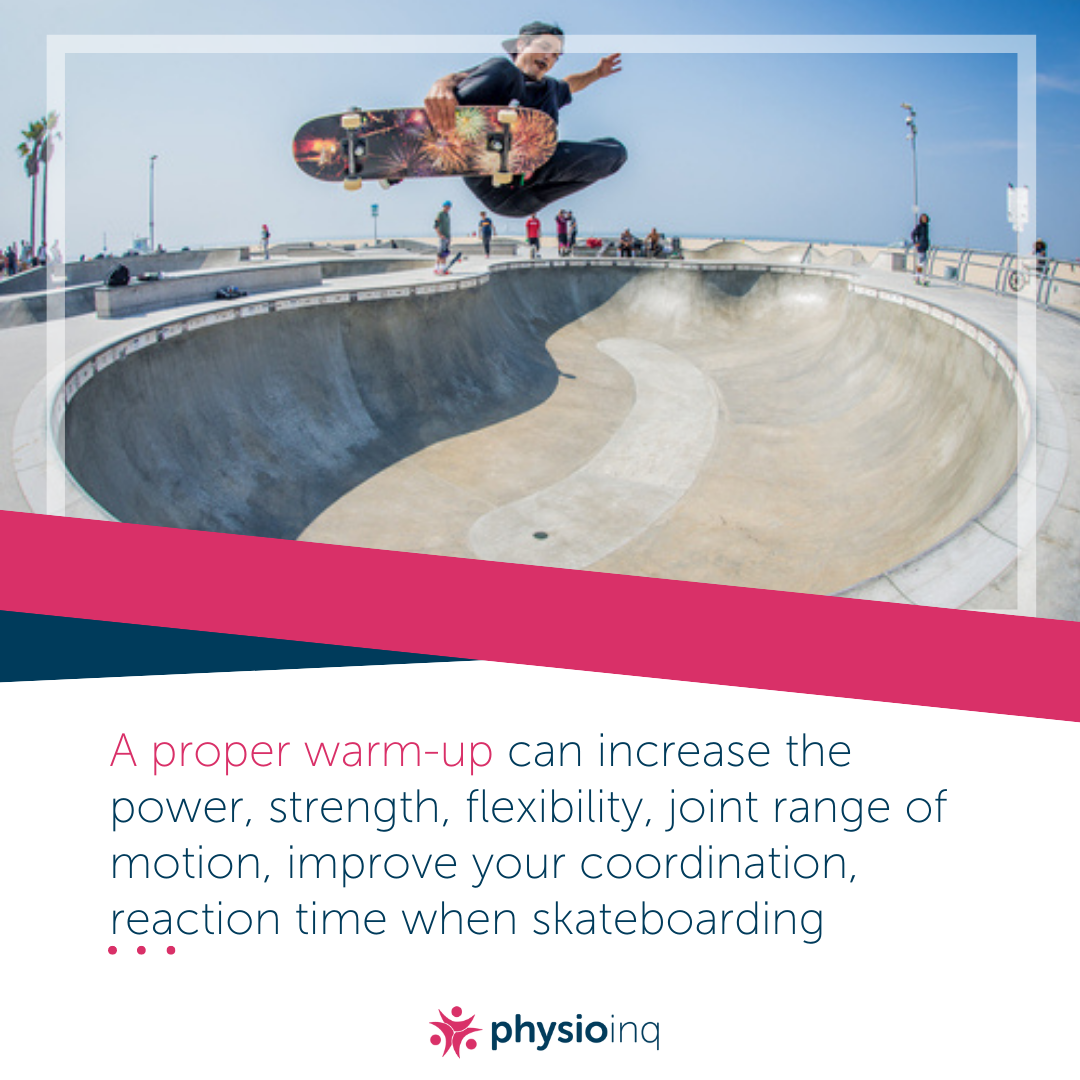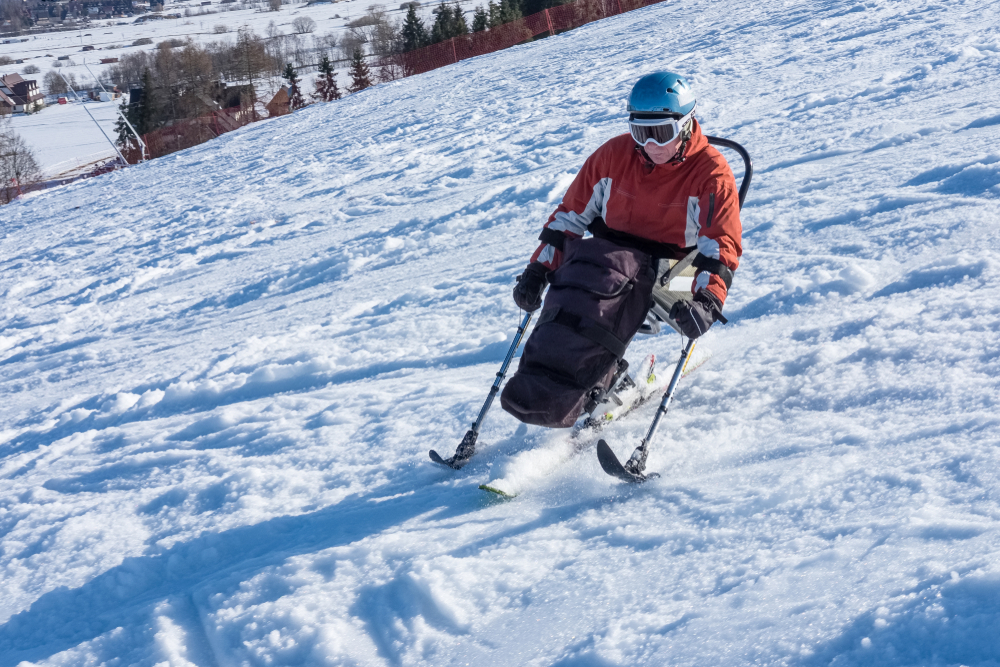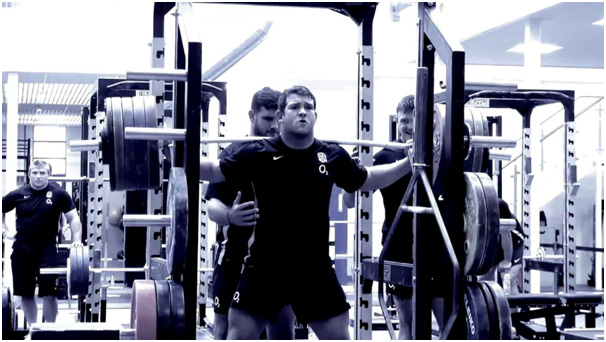Make an Appointment
These days, we might not realise how much we’re sitting down and how this prolonged sitting can have a negative effect on our health.
From sitting on the couch watching Netflix, enjoying long brunches on a Sunday, commuting to and from work on the train and sitting at our desks all day long, we’re sitting a lot.
In this blog post, we’re going over some of the health risks of prolonged sitting, how prolonged sitting affects our bodies, the details of sciatica and some of your most common questions about sciatica and other issues caused by sitting too long.
So, let’s get into it.
Prolonged Sitting Health Risks
Some experts suggest that prolonged sitting is more dangerous than smoking. And while this sounds extreme, sitting for long periods can do damage to our health in ways we might not realise.
As modern lifestyles become more and more sedentary, sitting for long periods of time can cause major issues to your spine. Somewhere between one and ten per cent of the population ages 25 to 45 report sciatica pain, one of the most painful risks of prolonged sitting.
According to a study from National Health and Nutrition Examinations Surveys, 70% of people spend six hours or more sitting down each day. Whether it’s sitting at a desk doing work, sitting to watch TV or sitting in a car, bus or train to commute, many spend most of their waking hours sitting down.
Even those who exercise regularly face health risks from prolonged sitting including:
- Heart disease
- Cancer
- Type 2 diabetes
- Sciatica
Still, regular exercise significantly reduces your risk of these health issues caused by sitting for long periods, but the statistics are unsettling. Essentially, if you sit for any prolonged period, it’s important to be aware of the risks and how to manage them.

Effects of Prolonged Sitting on Muscles
So, why does sitting wreak havoc on our health? Well, sitting has a profound impact on our muscles and spines.
When we sit, all of our upper body weight rests on our lower back. This increased compression in and on our spinal discs and spinal column increases the pressure against our nerve roots that make up our sciatic nerve. This is where sciatica symptoms come in.
Plus, if you have pre-existing back problems, sitting for long periods can worsen your symptoms. Whether it’s additional compression causing problems or it’s that extra irritation to previously irritated areas, the point is, prolonged sitting causes back pain.
Then, as more pain originates from the spinal column in the lower back, it’s bound to travel down to the hip joint, buttocks and back of the leg to the foot, causing a much bigger problem.
How long is too long to sit with sciatica?
Research suggests that sitting continuously for more than 30–45 minutes at a time can exacerbate sciatic pain. Every half-hour, aim to stand, walk or perform gentle hip and lower-back stretches for 2–3 minutes. Prolonged bouts exceeding an hour without movement increase pressure on the lumbar discs and narrow the spaces where the sciatic nerve exits the spine, deepening irritation.
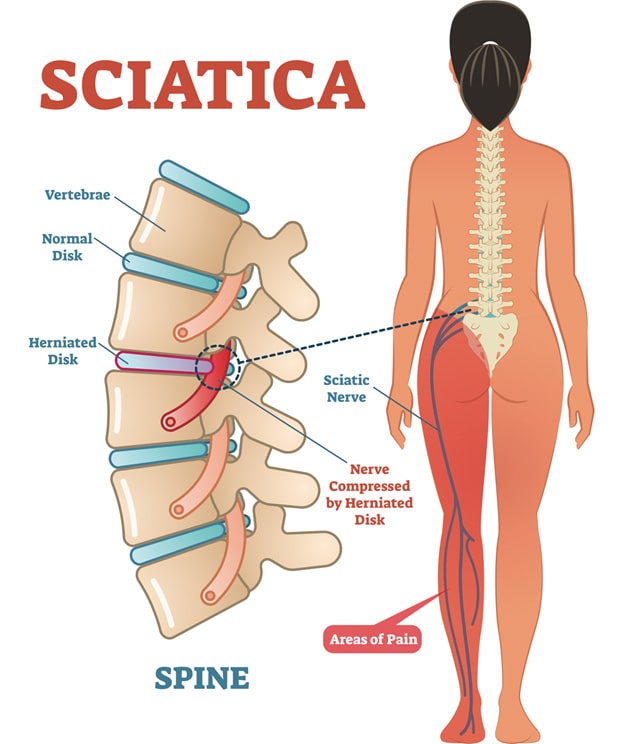
What is sciatica?
Sciatica is a chronic condition caused by a narrowing of the spine, bone spurs, herniated discs and prolonged sitting. Sciatica can be incredibly painful, requiring physiotherapy and can even cause additional problems like leg and foot pain.
However, on many occasions, sciatica can be resolved by taking some preventative measures if you happen to sit for long periods.
Why did I suddenly develop sciatica?
Sciatica can arise abruptly when a previously healthy disc bulges or herniates, suddenly compressing the nerve root. Common “sudden” triggers include:
- Heavy lifting or awkward twist, placing acute load on a vulnerable disc
- Falling or jarring impact, causing micro-tears in the annulus fibrosus
- Rapid return to prolonged sitting after activity, leaving a disc swollen and inflamed
Oftentimes, an underlying degenerative change builds over months, then a single event, like bending to pick up a child, brings on the classic sharp, radiating leg pain.
The main causes of sciatica include:
- Prolonged sitting
- Wearing high heels
- Bone spurs
- Herniated discs
- Pinched nerves
Other less common causes of sciatica including:
- Tumours
- Diabetes
- Sciatic nerve injury
- Pelvic fractures
- Glute trauma
For those with desk jobs, jobs requiring wearing high heels, jobs requiring heavy lifting or those who are obese or elderly are at higher risk of developing sciatica.
Even simple things like carrying heavy items in your back pocket and wearing tight pants can contribute to sciatica.
The most common symptoms associated with sciatica include:
- Lower back pain, usually one-sided
- Pain in your glutes and down one or both legs
- Heightened pain during a sneeze or cough
- Numbness
- Tingling sensations
- Muscle weakness
The severity of these symptoms will vary from person to person ranging from a dull ache to unbearable shooting pains.
What can be mistaken for sciatica?
Several conditions mimic sciatic-type symptoms but require different treatments:
- Piriformis syndrome – tight buttock muscle compresses the nerve outside the spine
- Lumbar spinal stenosis – central canal narrowing causes leg pain on standing or walking
- Hip osteoarthritis – groin and thigh pain that sometimes radiates downward
- Hamstring tendinopathy – high-sit tendons cause distal thigh discomfort
- Sacroiliac joint dysfunction – pain around the PSIS often mis-perceived as sciatica
A careful history, physical exam and, if needed, imaging will distinguish these from true nerve-root compression.

Frequently Asked Questions (FAQs) about Sciatica:
1. Can prolonged sitting cause sciatica?
Yes. Remaining seated for long periods increases pressure on lumbar discs and may compress the sciatic nerve roots, triggering pain down the leg.
2. Does sitting make sciatica worse?
Yes, sitting can make sciatica worse. Prolonged sitting can worsen sciatica as the pressure travels down into your glutes, hamstring and foot.
3. How should I sit to avoid sciatica?
Avoid sitting more than 30–45 minutes at a stretch, stand, walk or do gentle hip/back stretches for a few minutes every half-hour to offload the nerve.
You can also use a small pillow or rolled-up towel to support your lower back while sitting to minimise the likelihood of disc shifts.
Sitting on couches and chairs that are too soft can also contribute to sciatica pain. Without the proper support, you’re more likely to slouch and pull on your spine in unhealthy ways. So, while it may be counterintuitive, firmer couches and chairs are better, and finally, you’ll do well to stay hydrated as this will help keep your spinal discs lubricated which absorbs your weight and helps avoid too much spinal compression.
4. Why did I suddenly develop sciatica?
An acute disc bulge, heavy lift or awkward twist can precipitate sciatica if underlying degeneration or inflammation is already present, causing immediate nerve irritation.
5. What can be mistaken for sciatica?
Piriformis syndrome, lumbar stenosis, hip osteoarthritis, hamstring tendinopathy and sacroiliac dysfunction all mimic sciatic-type leg pain but have different origins.
6. How should I sit to minimise sciatica risk?
Sit with hips slightly higher than knees, use lumbar support, keep feet flat and swap positions every 20–30 minutes—set a timer if needed.
7. Can sitting too long cause nerve damage?
Yes, sitting too long can cause nerve damage in your spine and elsewhere. Although it might seem like sitting down would be a way to ease pain, your body is actually made to move and inactivity is actually worse for the back pain we might be experiencing.
8. How do I stop sciatica pain when sitting?
The best way to stop sciatica pain when sitting is to follow a program with a physiotherapist. Since sciatica can easily turn into a full-body experience, you’ll likely need the assistance of an expert to help you manage your symptoms and reverse your sciatica.
9. Is sitting cross-legged bad for sciatica?
No, sitting cross-legged is not bad for sciatica. In fact, there are a few ways you can sit that won’t make your sciatica worse.
- Sit with an open hip angle. Instead of sitting with your feet flat on the floor with your hips, knees and ankles at a 90-degree angle, try sitting in a way that allows your hips to be more open. You might raise your seat a bit higher, sit on a firm pillow or tuck your feet underneath you. With less compression in your hips, you’ll be taking some pressure off your sciatic nerve.
- Sit cross-legged. Sitting cross-legged or with one leg crossed over the other in a figure four position can give you some relief for sciatica pain. It also helps lengthen the piriformis muscle and decreases the pressure on your sciatic nerve.
- Sit with proper back support. With some lower back support from a lumbar roll cushion or by using a chair with lumbar support built-in, you can help the appropriate muscles relax to take some pressure off of your sciatic nerve.
10. Can you sleep on your side with sciatica?
Yes, you can sleep on your side and back with sciatica. However, it is not recommended you sleep on your stomach.
When sleeping on your side with sciatica, lie on your bed with your injured side toward the ceiling. If there is a gap between your waist and your bed, place a small pillow in the space to fill the gap for more support. Many also find it helpful to place a pillow between their knees to help relieve sciatica pain while sleeping on their side.
Additionally, you might also put a towel or thin pillow under your lower back while sleeping on your back to straighten out the curve of your spine and relieve pain.
Believe it or not, sleeping on the floor might also help with sciatica. It may seem like a soft mattress would be ideal for pain relief, but firm surfaces actually better support your muscles and bones during sleep. So, if you have extreme sciatica pain, sleeping on the floor can really help.
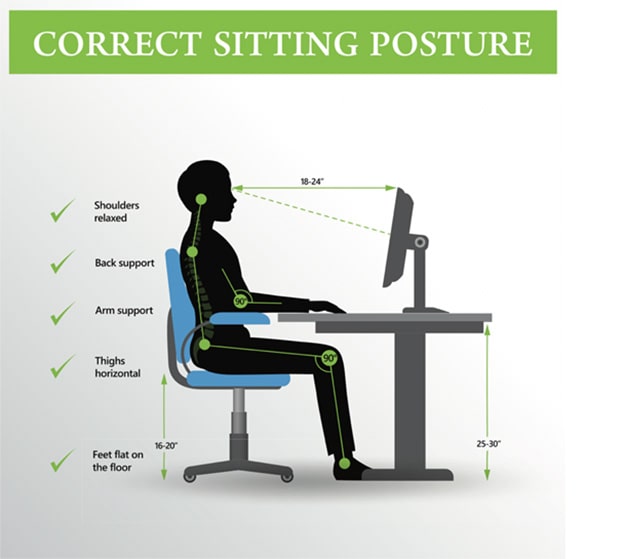
Prolonged sitting is a modifiable risk factor for sciatica—and with simple strategies like standing breaks, correct posture and targeted stretches, you can greatly reduce your pain. Should your symptoms persist, a personalised assessment is vital to rule out disc herniation or mimicking conditions and to guide effective rehabilitation.
Next Steps
If sciatica is impacting your daily life, Physio Inq can help you stand up to pain:
- Physiotherapy for clinical assessment and hands-on treatment
- Exercise Physiology for bespoke strength, flexibility and movement programs
- Occupational Therapy to optimise your workspace and daily routines
Call us today on 1300 731 733 or book an appointment online for a tailored plan to relieve your sciatica and get you moving comfortably again.
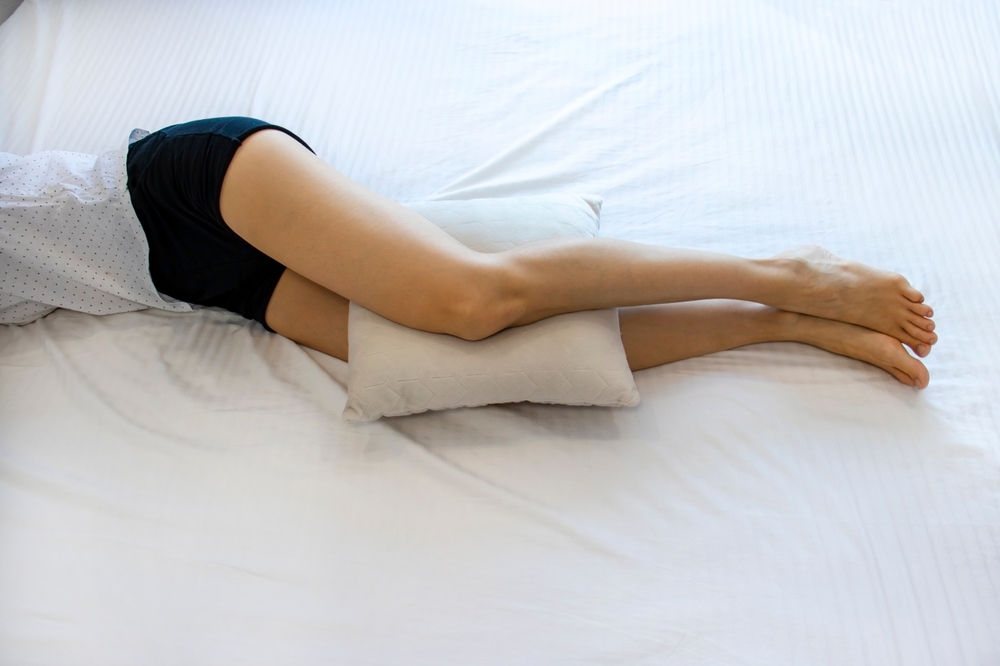
Date Published: Wednesday, May 5, 2021
Locate a Mobile Physiotherapy
Service Near me
Get the experience & convinence you deserve to support your or a loved one's allied health needs.
Our Mobile Physiotherapy team are currently serving & taking appointments in the following states and regions in Australia:
Need to get into direct contact with ur Client Services team? We're all ears. Call our team directly on 1300 731 733

